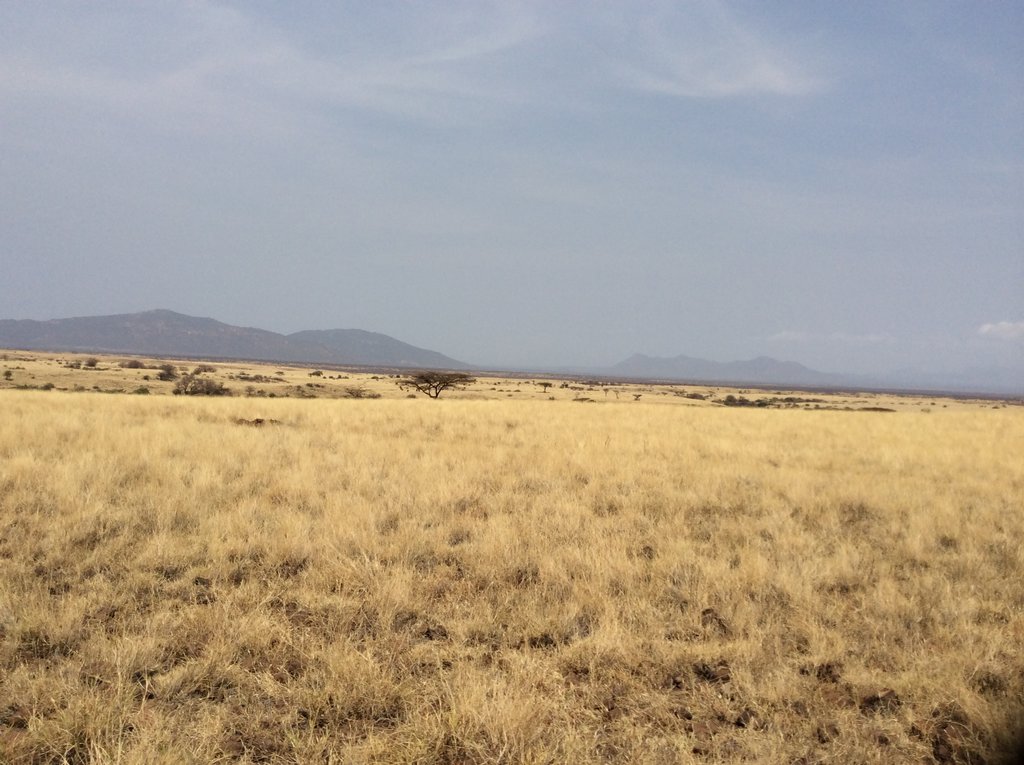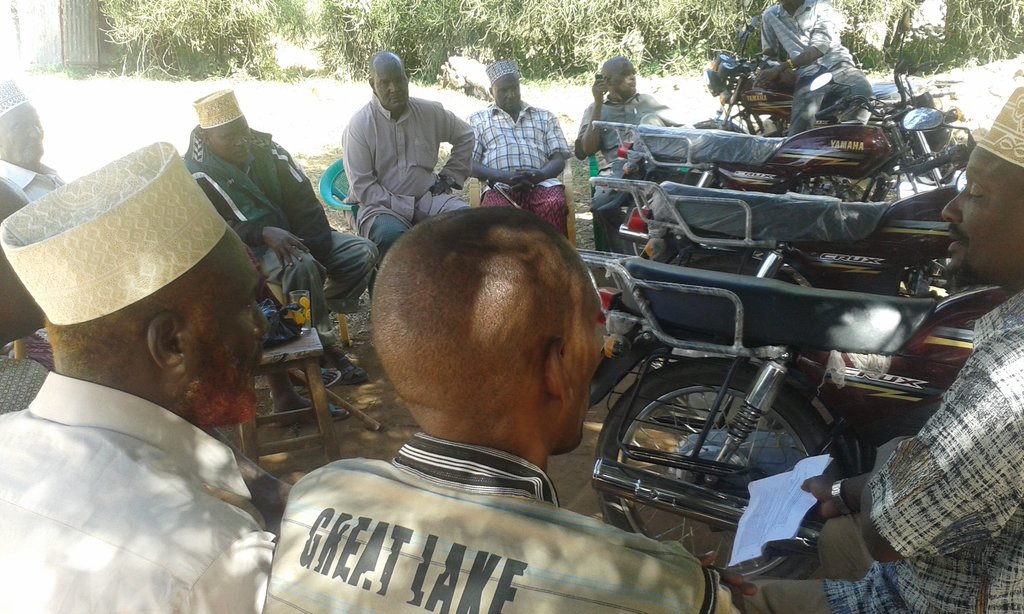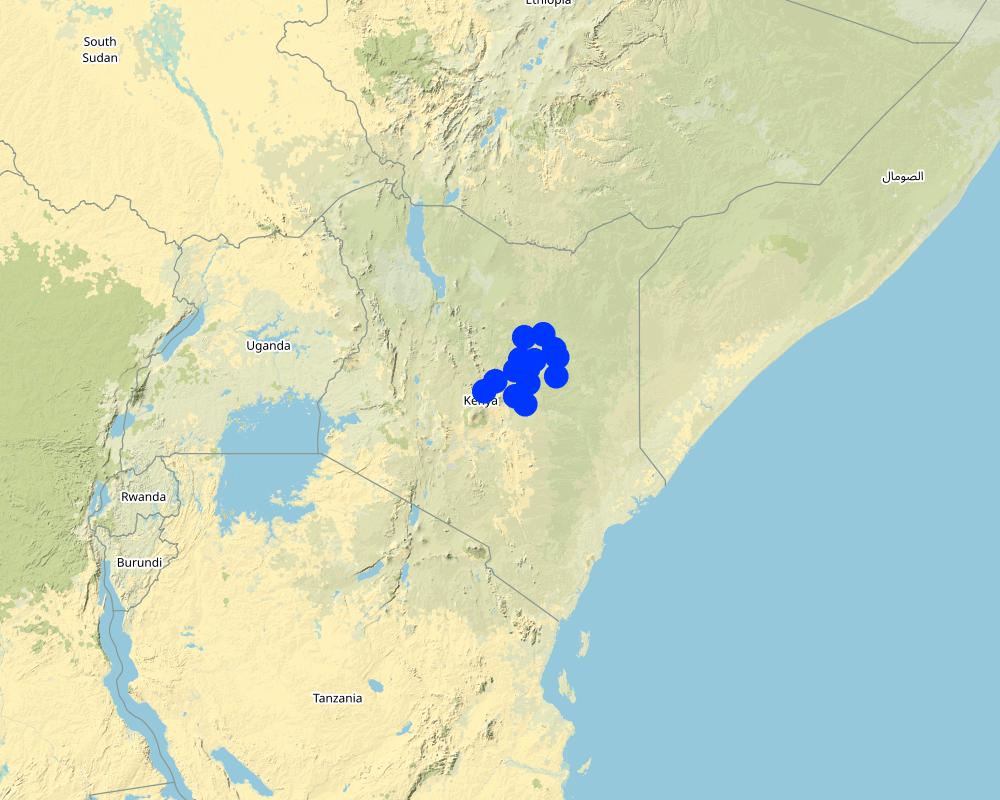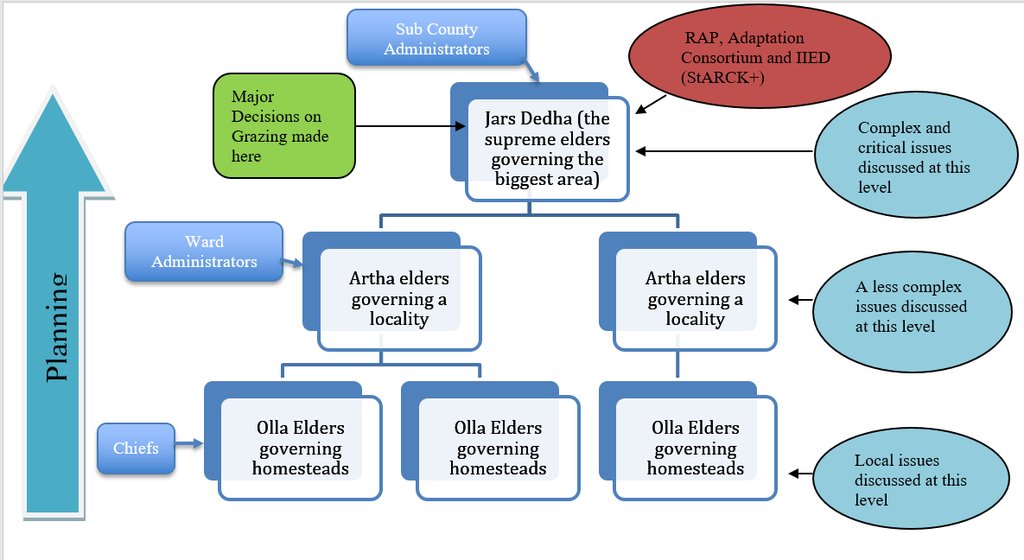Empowering Dedha institutions in governing the natural resources of Isiolo rangelands [كينيا]
- تاريخ الإنشاء:
- تحديث:
- جامع المعلومات: IBRAHIM JARSO
- المحرر: Caroline King-Okumu
- المراجعون: Hanspeter Liniger, Rima Mekdaschi Studer, Donia Mühlematter, Joana Eichenberger
Jars Dedha
approaches_3345 - كينيا
- Empowering Dedha institutions in governing the natural resources of Isiolo rangelands: 13 مايو، 2018 (inactive)
- Empowering Dedha institutions in governing the natural resources of Isiolo rangelands: 31 يوليو، 2018 (inactive)
- Empowering Dedha institutions in governing the natural resources of Isiolo rangelands: 3 سبتمبر، 2018 (inactive)
- Empowering Dedha institutions in governing the natural resources of Isiolo rangelands: 2 نوفمبر، 2021 (public)
عرض الأقسام
توسيع الكل طي الكل1. معلومات عامة
1.2 تفاصيل الاتصال بالأشخاص الرئيسيين لمصدر المعلومات والمؤسسات المعنية بتقييم وتوثيق النهج
مستخدم الأرض:
Boru Edin
+254 715 627 545
Kinna Dedha Elders
Kinna town, Kinna Ward, Isiolo County.
كينيا
Non-State Actor:
Jama Abdiaziz
+254 707 720 577
aziz2012ke@gmail.com
Pastoralist Capacity Development Programme (PACDEP)
Isiolo Town, Kenya
كينيا
مستخدم الأرض:
Diba Rukia
+254 728 643 044
Ward Adaptation Planning Committee
Kinna, Isiolo County
كينيا
متخصص في الإدارة المستدامة للأراضي:
اسم المشروع الذي سهّل توثيق/تقييم النهج (إذا كان ذلك على صلة)
Strengthening Adaptation and Resilience to Climate Change in Kenya Plus (StARCK+)اسم المشروع الذي سهّل توثيق/تقييم النهج (إذا كان ذلك على صلة)
Book project: Guidelines to Rangeland Management in Sub-Saharan Africa (Rangeland Management)اسم المؤسسة (المؤسسات) التي سهلت توثيق/تقييم النهج (إذا كان ذلك على صلة)
Resource Advocacy Programme (RAP) - كينيا1.3 الشروط المتعلقة باستخدام البيانات الموثقة من خلال WOCAT
متى تم تجميع البيانات (ميدانيا)؟:
03/11/2017
يوافق جامع المعلومات والشخص (لاشخاص) الرئيسي لمصدر المعلومات على الشروط المتعلقة باستخدام البيانات الموثقة من خلال WOCAT:
نعم
2. وصف نهج الإدارة المستدامة للأراضي
2.1 وصف موجز للنهج
This approach – driven by communities and supported by various agencies - aims to revive and strengthen the traditional natural resource management institutions of Boran pastoralists in Northern Kenya. The traditional system, which was devised by the Boran pastoral community and honed over centuries to suit the challenges of the rangelands, has been steadily eroded by external factors and formalised systems after the emergence of the nation-state.
2.2 وصف تفصيلي للنهج
وصف تفصيلي للنهج:
Pastoral Community Members together with the Jarsa Dedha (the council of elders who control the use of grazing land and its resources) are at the forefront of reinvigorating traditions of rangeland management. To achieve this, they have been supported by organizations including the Ward Adaptation Planning Committees (WAPC), the Resource Advocacy Programme (RAP) and the International Institute for Environment and Development (IIED). There has been a focus on reviving traditional institutions and systems of managing of natural resources to help communities adapt to climate change.
One specific project that has assisted the re-empowerment of the Dedha institutions was StARCK+ (funded by DfID). StARCK+ was founded on an understanding and an appreciation of the traditional natural resource governance of the Boran pastoral community. Responding to participatory demand it undertook to help strengthen this customary natural resource management system. Various agencies have also conducted research on the traditional institution and investigated how it could be improved. These include IIED, (UK), the University of Nairobi, (Kenya) and the University of Sussex (UK).
The Jarsa Dedha is an indigenous institution, through which customary laws and provisions guide the management of natural resources. The Boran of Isiolo County, Kenya, like their kin in southern Ethiopia, derive their customary laws from an overall supreme general assembly called the Gadha. The Gadha governing council preserves traditional laws and codes of conduct, as well as issuing amendments and additions based on the evolving environmental, social and cultural context. The Gadha system has a set of laws and provisions (seere), customs and culture (aada), and norms and values that govern society.
The recognition and observance of seere and aada are still considered vital for the wellbeing of the community, and the Gadha Council remains a legitimate institution in the eyes of Borana society. However, adherence to these laws is declining and the power of Borana customary institutions to enforce regulations is being undermined in a number of ways.
The reasons for weakening traditional institutions are basically poor recognition by the county and national government, and non-compliance with the rules due to changing socio-cultural norms. The council of elders that govern grazing resources, the Jarsa Dedha, which is the custodian of these unwritten rules and regulations locally, no longer has sufficient capacity or authority to enforce them as it had done prior to colonial rule. With climate change, pasture and water supplies are becoming scarcer and there is no other better way to govern land than the traditional system: that is why reviving, strengthening and improving the system was much welcomed through the advent of the StARCK+ project and the initiatives and support that have followed.
Looking towards the future, the rules of governing natural resources have been collected and formed into a draft county customary natural resource governance bill. This, if passed by the County Assembly, would represent a very significant step, by legitimising the traditional system of rangeland management through the Jarsa Dedha.
2.3 صور عن النهج
2.4 فيديوهات عن النهج
تعليقات، وصف موجز:
The video clearly defines the technology and the approach
التاريخ:
20/02/2015
الموقع:
Garbatulla Area
اسم مصور الفيديو:
Hilda Kathure
2.5 البلد/المنطقة/المواقع التي تم تطبيق النهج فيها
البلد:
كينيا
المنطقة/الولاية/المحافظة:
Isiolo
مزيد من التفاصيل حول الموقع:
Pastoral areas of Isiolo
Map
×2.6 تواريخ بدء وإنهاء تنفيذ النهج
أشر إلى سنة البدء:
2012
في حالة عدم معرفة السنة بالتحديد، يرجى الإشارة إلى التاريخ التقريبي لبدء النهج:
منذ أقل من 10 سنوات (مؤخرًا)
التعليقات:
The project started 2012 and ended 2016 but the approach is still continuing
2.7 نوع النهج
- تقليدي/أصلي
2.8 الغايات/الأهداف الرئيسية للنهج
The Approach is aimed at strenghthening and re-empowering the traditional institutions that govern rangeland management in the rangelands of Isiolo, in order to improve utilisation of natural resources and build community resilience to droughts and future environmental changes.
2.9 الظروف التي تمكن أو تعيق تنفيذ التقنية/التقنيات المطبقة بموجب النهج
المعايير والقيم الاجتماعية /الثقافية/ الدينية
- تمكين/تمكيني
The approach was traditional and embedded in the culture of boran pastoralists and therefore easy to implement.
- معيق
The commercialization of livestock and its production like milk has made it difficult for elders to implement the approach.
توفر/الوصول إلى الموارد والخدمات المالية
- تمكين/تمكيني
Communities make their own contributions to support implementation of the approach.
- معيق
No specific budget assigned by government authority for this approach: some funds from projects and county government and contributions from the pastoralists themselves.
الإطار المؤسساتي
- تمكين/تمكيني
Well elaborated organizational design at all levels of institutional scale.
- معيق
Collision between the mandates of traditional structure and formal structure. This was addressed through accepting Chiefs as ex-official members in the Dedha council of elders.
التعاون/التنسيق بين الجهات الفاعلة
- تمكين/تمكيني
Many NGOs and local organization support the implementation of the approach through providing means for surveillance such as vehicles or motorbikes. NGOs frequently also support Dedha assemblies that involve meetings of people from far away.
- معيق
Government and some NGOs sometimes establish parallel grazing committees.
الإطار القانوني (حيازة الأراضي، وحقوق استخدام الأراضي والمياه)
- تمكين/تمكيني
Traditional tenure system.
- معيق
No legal papers for the ownership.
السياسات
- تمكين/تمكيني
Traditional provisions and rules known by all community members.
- معيق
Traditional rules not known to everyone.
حوكمة الأراضي (صنع القرار والتنفيذ والإنفاذ)
- تمكين/تمكيني
Elders make key decisions on governance of land.
- معيق
Women and youth not well involved in decision making although changes are happening nowadays to include them.
المعرفة حول الإدارة المستدامة للأراضي، والوصول إلى الدعم الفني
- تمكين/تمكيني
Traditional skills much used.
- معيق
Little technical support.
الأسواق (لشراء المدخلات وبيع المنتجات) والأسعار
- تمكين/تمكيني
Ensures security and market thrives.
- معيق
The approach is more social and not market oriented.
عبء العمل، توفر القوى العاملة
- تمكين/تمكيني
Youth provide man power Voluntarily.
- معيق
Volunteers sometimes don’t come out for work.
3. المشاركة وأدوار الأطراف المعنية
3.1 أصحاب المصلحة المعنيون بالنهج وأدوارهم
- مستخدمو الأراضي المحليون/المجتمعات المحلية
Boran Community members, Dedha elders.
Agree on the pasture and water management approach and implement .
- المنظمات المجتمعية
Ward Adaptation Planning Committees.
Implement community plans and fundraise for it.
- منظمة غير حكومية
Resource Advocacy Programme (RAP), Merti Integrated Development Programme (MIDP), Pastoralist A Capacity Development E Programme (PACDEP), International Institute for Environment Development and Adaptation Consortium (ADA)
Support communities in implementing the approach.
Ward Adaptation Planning Committees; Implement community plans and fundraise for it.
إذا كان هناك العديد من الأطراف المعنية، قم بالإشارة إلى الوكالة الرائدة:
WAPC , ADA and IIED
3.2 انخراط مستخدمي الأراضي المحليين/المجتمعات المحلية في المراحل المختلفة للنهج
| انخراط مستخدمي الأراضي المحليين/المجتمعات المحلية | حدد من شارك وصف الأنشطة | |
|---|---|---|
| المبادرة/التحفيز | تفاعلي | Pastoral Community Members, Dedha elders and supporting organizations like WAPC, RAP, IIED and DfID supported the process of reviving the traditional system of management of natural resources to help communities adapt to climate change. |
| التخطيط | تفاعلي | Pastoral Community Members and Dedha Elders to improve their systems of management of land and land-based resources. |
| التنفيذ | تفاعلي | Dedha elders as they are tasked with ensuring that the natural resource governance system is successful. |
| الرصد/التقييم | تفاعلي | Pastoralists and elders to keep those tasked are properly undertaking the responsibilities. |
3.3 مخطط التدفق (إذا كان متاحًا)
الوصف:
The Dedha traditional system of managing resources has internal hierarchy at different levels i.e. Olla (homestead), Artha (locality) and Dedha (a large area). Although planning and minor decisions are made at local levels, major and binding decisions are agreed at Dedha level on grazing and management of pasture. Many NGOs and government actors engage the management system at Dedha level.
المؤلف:
Ibrahim Jarso
3.4 اتخاذ القرار بشأن اختيار تقنية/تقنيات الإدارة المستدامة للأراضي
حدد من الذي قرر اختيار التقنية/التقنيات التي سيتم تنفيذها:
- جميع الجهات الفاعلة ذات الصلة، كجزء من نهج تشاركي
اشرح:
The Participatory process is very essential in making the governance system work for pastoralists.
حدد على أي أساس تم اتخاذ القرارات:
- خبرة وآراء شخصية(غير موثقة)
4. الدعم الفني وبناء القدرات وإدارة المعرفة
4.1 بناء القدرات/التدريب
هل تم تقديم التدريب لمستخدمي الأراضي / الأطراف المعنيين الآخرين؟:
نعم
حدد من تم تدريبه:
- مستخدمو الأراضي
إذا كان ذلك على صلة، حدد الجنس والعمر والوضع والعرق وما إلى ذلك.
Largely elders but women and youth are also represented in the training.
شكل التدريب:
- في العمل
- من مزارع إلى مزارع
- اجتماعات عامة
المواضيع المغطاة:
Constitutional clauses supporting management of land through traditional institutions.
Need to legislate the local traditional rules to county laws. Participatory mapping of Natural Resources in the grazing areas to improve planning.
التعليقات:
Community members really participated in the processes and trainings and understood the contemporary issues.
4.2 خدمة استشارية
هل يملك مستخدمو الأراضي وصولا إلى خدمة استشارية؟:
نعم
حدد ما إذا كانت الخدمة الاستشارية متوفرة:
- في مراكز دائمة
وصف/تعليقات:
The pastoralist extension training sessions take place in Agricultural Training Centre in Isiolo Town. They are normally conducted once or twice a year because of financial constraints.
4.3 تعزيز المؤسسات (التطوير التنظيمي)
هل تم إنشاء أو تعزيز مؤسسات من خلال هذا النهج؟:
- نعم، إلى حد كبير
حدد المستوى (المستويات) التي تم فيها تعزيز أو إنشاء المؤسسات:
- محلي
صف المؤسسة والأدوار والمسؤوليات والأعضاء وما إلى ذلك.
The Dedha institution has been strengthened as they were enabled to undertake their responsibilities better.
حدد نوع الدعم:
- معدات
- Their meetings were supported and made frequent and increased reach.
اعط مزيدا من التفاصيل:
Provided with materials like motorbikes.
4.4 الرصد والتقييم
هل يشكل الرصد والتقييم جزءا من النهج؟:
نعم
التعليقات:
This is a traditional approach and it is effectively self-monitored for learning and improvement.
إذا كانت الإجابة بنعم، فهل من المقصود استخدام هذه الوثائق للمراقبة والتقييم؟:
نعم
4.5 البحوث
هل كانت البحوث جزءًا من النهج؟:
نعم
حدد المواضيع:
- علم الاجتماع
- الاقتصاد / التسويق
- علم الايكولوجيا
- تكنولوجيا
أعط تفاصيل إضافية وأشر إلى من قام بالبحوث:
Various institutions have conducted research on the traditional institution and investigated how it could be improved through strengthening and reviving it with new initiatives for improved governance of natural resources. The institutions are the International Institute for Environment and Development, (UK), the University of Nairobi, (Kenya) and the University of Sussex (UK).
5. التمويل والدعم المادي الخارجي
5.1 الميزانية السنوية لمكون الإدارة المستدامة للأراضي في النهج المذكور
التعليقات (على سبيل المثال المصادر الرئيسية للتمويل/الجهات المانحة الرئيسية):
The traditional system is self sustaining and thrives through local contributions but no specific budget lines.
5.2 الدعم المالي/المادي المقدم لمستخدمي الأراضي
هل حصل مستخدمو الأراضي على دعم مالي/ مادي لتنفيذ التقنية/ التقنيات؟:
كلا
5.3 إعانات لمدخلات محددة (بما في ذلك العمالة)
- غير موجود
إذا كان العمل من قبل مستخدمي الأراضي مدخلاً جوهريًا، فهل كان:
- تطوعي
التعليقات:
The land users are pastoralists and surveillance of grazing reserves were undertaken to protect their pastures from irregular access. Dedha elders oversee the surveillance and health of rangelands.
5.4 الائتمان
هل تم توفير ائتمان في إطار نهج أنشطة الإدارة المستدامة للأراضي؟:
كلا
5.5 حوافز أو وسائل أخرى
هل تم استخدام حوافز أو أدوات أخرى لتشجيع تنفيذ تقنيات الإدارة المستدامة للأراضي؟:
نعم
إذا كانت الإجابة بنعم، حدد:
The rules of governing natural resources were collected and documented into a county customary natural resource governance bill.
6. تحليل الأثر والتصريحات الختامية
6.1 آثار النهج
هل ساهم النهج في تمكين مستخدمي الأراضي المحليين وتحسين مشاركة الأطراف المعنية؟:
- لا
- نعم، قليلا
- نعم، باعتدال
- نعم، إلى حد كبير
Strengthens community rights and ownership of their land.
هل مكّن النهج من اتخاذ القرارات المبنية على الأدلة؟:
- لا
- نعم، قليلا
- نعم، باعتدال
- نعم، إلى حد كبير
The Approach convened the community and identified the community challenges and worked on it with the support of Dedha elders.
هل ساعد النهج مستخدمي الأراضي على تنفيذ وصيانة تقنيات الإدارة المستدامة للأراضي؟:
- لا
- نعم، قليلا
- نعم، باعتدال
- نعم، إلى حد كبير
Supported the essential activities of the traditional system and made it easy to implement.
هل نجح النهج في تحسين التنسيق والتنفيذ الفعال من حيث التكلفة لأنشطة الإدارة المستدامة للأراضي؟:
- لا
- نعم، قليلا
- نعم، باعتدال
- نعم، إلى حد كبير
Improved coordination among the partners and made implementation easy.
Beside getting support from County climate adaptation program through the Ward Adaptation Planning Committee, the approach also got support from Water Sector Trust Fund.
هل أدى النهج إلى تحسين معرفة وقدرات مستخدمي الأراضي على تنفيذ الإدارة المستدامة للأراضي؟:
- لا
- نعم، قليلا
- نعم، باعتدال
- نعم، إلى حد كبير
The knowledge is culturally passed to generations
هل أدى النهج إلى تحسين معرفة وقدرات الأطراف المعنية الأخرى؟:
- لا
- نعم، قليلا
- نعم، باعتدال
- نعم، إلى حد كبير
Yes, other stakeholders’ knowledge on the system was also improved.
هل ساهم النهج في بناء/تعزيز المؤسسات والتعاون بين الأطراف المعنية؟:
- لا
- نعم، قليلا
- نعم، باعتدال
- نعم، إلى حد كبير
Yes, the Approach made local indigenous institution stronger and enhanced their collaboration.
هل ساهم النهج في التخفيف من حدة الصراعات؟:
- لا
- نعم، قليلا
- نعم، باعتدال
- نعم، إلى حد كبير
It provided platform for resource based conflict discussions and also settled many of local and trans-boundary conflicts through the empowered Dedha elders
هل ساهم النهج في تمكين الفئات المحرومة اجتماعيا واقتصاديا؟:
- لا
- نعم، قليلا
- نعم، باعتدال
- نعم، إلى حد كبير
Yes, the approached saved livestock from death in times of drought and built pastoral communities economically.
هل أدى النهج إلى تحسين المساواة بين الجنسين وتمكين النساء والفتيات؟:
- لا
- نعم، قليلا
- نعم، باعتدال
- نعم، إلى حد كبير
The aAproach engaged the Dedha elders to accept women in their traditional institutions and entrenched gender in establishment of WAPCs
هل شجع النهج الشباب/الجيل القادم من مستخدمي الأراضي على الانخراط في الإدارة المستدامة للأراضي؟:
- لا
- نعم، قليلا
- نعم، باعتدال
- نعم، إلى حد كبير
Many youth were involved in implementing the Traditional systems of governance as a result of the approach
هل أدى النهج إلى تحسن في مسائل حيازة الأراضي / حقوق المستخدمين التي أعاقت تنفيذ تقنيات الإدارة المستدامة للأراضي؟:
- لا
- نعم، قليلا
- نعم، باعتدال
- نعم، إلى حد كبير
Yes, the Approach led to formulation of customary natural resource management bill meant to enhance land rights.
هل أدى هذا النهج إلى تحسين الأمن الغذائي / تحسين التغذية؟:
- لا
- نعم، قليلا
- نعم، باعتدال
- نعم، إلى حد كبير
Yes, through ensuring retention of livestock asset.
هل أدى النهج إلى تحسين الوصول إلى الأسواق؟:
- لا
- نعم، قليلا
- نعم، باعتدال
- نعم، إلى حد كبير
The Approach through improvement of range management institution of Dedha, has helped to ensure there is food for pastoral herds and livestock with good body conditions were sold in local markets in good prices
هل أدى النهج إلى تحسين الوصول إلى المياه والصرف الصحي؟:
- لا
- نعم، قليلا
- نعم، باعتدال
- نعم، إلى حد كبير
Yes, through the approach many water facilities were better managed.
هل أدى النهج إلى تحسين قدرة مستخدمي الأراضي على التكيف مع التغيرات المناخية/الظواهر المناخية المتطرفة والتخفيف من الكوارث المرتبطة بالمناخ؟:
- لا
- نعم، قليلا
- نعم، باعتدال
- نعم، إلى حد كبير
Yes, the Approach empowered the community to arrange their pattern of grazing to wet, dry season and grazing reserves to cope with climate extremes and disasters.
هل أدى النهج إلى توفير فرص عمل ودخل؟:
- لا
- نعم، قليلا
- نعم، باعتدال
- نعم، إلى حد كبير
Yes, many job opportunities were created for locals and also private businesses.
6.2 المحفز الرئيسي لقيام مستخدمي الأراضي بتنفيذ الإدارة المستدامة للأراضي
- زيادة الإنتاج
The livestock was calving and reproducing very fast leading to increased production as a result of good management of land.
- زيادة الربح (القدرة)، وتحسين نسبة التكلفة إلى العائد
With minimal and voluntary inputs the pastoralists keep livestock in the range and make a lot of profit when they sell.
- الحد من تدهور الأراضي
The controlled grazing pattern led to regeneration of degraded rangelands and improved its ecosystem services.
- الحد من مخاطر الكوارث
With strengthened dedha elders the community were able to prepare very well to drought and other disasters.
- انخفاض عبء العمل
Available pasture when needed reduced the challenges of mobility to far areas and excess workload.
- الوجاهة والضغط الاجتماعي/التماسك الاجتماعي
The approach enhances local prestige and also reduces the incidences of conflict in tough times enhancing social cohesion.
- الوعي البيئي
The approach allows regeneration of natural vegetation as pastoralists preserve pasture in one grazing area as they grazing in the other.
- العادات والمعتقدات والأخلاق
The approach uses traditional etiquettes which enhances customs and beliefs.
- تعزيز المعرفة والمهارات في مجال الإدارة المستدامة للأراضي
The approach allows young people to learn and attain new knowledge on proper governance of natural resources as well the elders attain new contemporary skills to manage land.
- تحسينات جماليية
The preserved grazing areas allows pasture to blossom and very beautiful to the eye as ecosystems regenerates and gets in to new life.
- التخفيف من حدة الصراع
The approach reduces incidences of conflict as the use and stewardship of pasture and water is clearly defined.
6.3 استدامة أنشطة النهج
هل يمكن لمستخدمي الأراضي المحافظة على استدامة ما تم تنفيذه من خلال النهج (بدون دعم خارجي)؟:
- نعم
إذا كانت الإجابة بنعم، صف كيف:
The traditional system of managing natural resources for pastoralists has been in place for time immemorial and it supports their way of life and even if there is minimal support from outside, such as the empowering approach, the SLM will still continue as it was developed by Boran pastoralists – who feel it is the most legitimate and appropriate system of governing rangelands in the region. This has been confirmed by many analytical studies of the system.
6.4 نقاط قوة/مزايا النهج
| نقاط القوة/ المزايا/ الفرص من وجهة نظر مستخدمي الأراضي |
|---|
| It is inherent approach that will pass to the next generation of pastoralists with the new innovations that are incorporated over the years. |
| It is the cheapest and easiest way of managing the rangelands for posterity. |
| It is a very flexible approach that's accepting new changes so that the technology is conversant at all times. |
| نقاط القوة/ المزايا/ الفرص من وجهة نظر جامع المعلومات أو غيره من الاشخاص الرئيسيين لمصدر المعلومات |
|---|
| It is a legitimate system recognized by all pastoralist for management of their rangeland resources. |
| It is conservative and less costly to implement in the vast rangelands with little incentives. |
6.5 نقاط الضعف/ العيوب في المنهج وطرق التغلب عليها
| نقاط الضعف/ المساوىء/ المخاطر من وجهة نظر مستخدم الأراضي | كيف يمكن التغلب عليها؟ |
|---|---|
| There is no law protecting it. | The government need to establish a law that recognizes and protects the approach. |
| The changing social norms with globalization and diversification of livelihood is pausing a challenge like Commercial Pastoralism | Government need to establish policies and plans as well as legislations that recognizes the traditional systems and institution for the approach to be successful for long |
| نقاط الضعف/ المساوىء/ المخاطر من وجهة نظر جامع المعلومات أو غيره من الاشخاص الرئيسيين لمصدر المعلومات | كيف يمكن التغلب عليها؟ |
|---|---|
| There are many competing claims over rangeland resources and government supports some. | Create awareness of local leaders about the competing claims and lobby them to protect rangeland resources. |
7. المراجع والروابط
7.1 طرق جمع/مصادر المعلومات
- زيارات ميدانية، مسوحات ميدانية
2 visits
- مقابلات مع مستخدمي الأراضي
6 interviews
- التجميع من التقارير والوثائق الأخرى الموجودة
2
7.2 المراجع للمنشورات المتاحة
العنوان، المؤلف، السنة، النظام القياسي الدولي لترقيم الكتب ISBN:
Evolving pastoralists institutions by patison and tari
متاح من أين؟كم التكلفة؟:
IIED Website
7.3 روابط للمعلومات ذات الصلة المتوفرة على الإنترنت
العنوان/الوصف:
Evolving customary institutions by patison and tari
عنوان الرابط URL:
pubs.iied.org/pdfs/10076IIED.pdf
العنوان/الوصف:
Strengthening Customary institutions the case of Isiolo County Northern Kenya by Caroline, Tari and Jarso
عنوان الرابط URL:
www.celep.info/wp-content/uploads/2015/11/Strengthening-local-institutions.pdf
العنوان/الوصف:
Investing in institutional ‘software’ to build climate resilience
عنوان الرابط URL:
https://anglejournal.com/article/2015-06-investing-in-institutional-software-to-build-climate-resilience/
العنوان/الوصف:
Inclusive green growth in Kenya: Opportunities in the dryland water and rangeland sectors
عنوان الرابط URL:
http://pubs.iied.org/10137IIED/
العنوان/الوصف:
Vegetation resources and their economic importance in Isiolo County, Kenya
عنوان الرابط URL:
http://pubs.iied.org/10141IIED/
الروابط والوحدات المواضيعية
توسيع الكل طي الكلالروابط
لا يوجد روابط
الوحدات المواضيعية
لا يوجد وحدات مواضيعية







